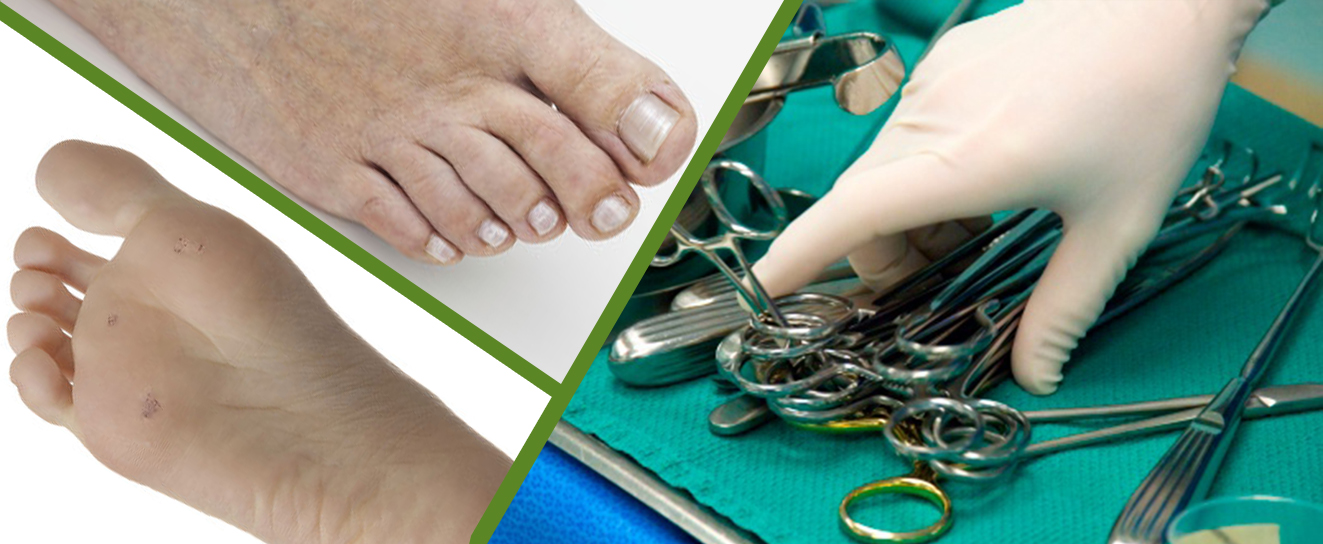

Ingrown Toenail Surgery Canberra
What is an ingrown toenail and why it is dangerous for you
As a podiatrist will tell you, ingrown toenails are a common condition affecting all age groups. Most commonly, the big toenail is involved, but any nail can be affected. The side of an ingrown toenail irritates the surrounding skin and may be extremely painful. In some cases, the toenail actually pierces the flesh, causing more pain during the day.
Ingrown toenails can often become infected. Signs of bacterial infection are increased pain, redness and swelling of the surrounding skin, and green or yellow pus. If not treated, usually by surgery, the infection may extend to affect the foot, leg or even the underlying bone. People with diabetes or circulatory problems are most at risk from serious toenail complications.
Root causes of ingrown toenails from habits to inherited traits
The most common cause of an ingrown toenail is excess toenail curvature causing it to dig into the flesh. Toenails that are fan shaped can also cause problems, and (as with excessively curved toenails) are hereditary. Poor toenail cutting technique resulting in a spike being left on the edge of the toenail which may cause an acute ingrown toenail.
Poorly fitting footwear is another contributing factor. Shoes which are too tight, high heels and pointed toed shoes can all increase pressure on the toenails and cause irritation of the surrounding skin. Sweaty feet, for example sports people, are also more susceptible to ingrown toenails as softer skin is more likely to become irritated.
Other causes of ingrown toenail are trauma to the nail, fungal infection, and certain medications. Make sure to check in at a clinic and consult a podiatrist if you have any concerns.
Treatment options of ingrown toenails at a hospital and at home
The podiatrists at ACT Podiatry have extensive experience in treating ingrown toenails at their clinic. We work with very young children to the very elderly; alongside athletes and patients with coexisting complex medial conditions.
Acute ingrown toenails usually respond well to a short course of treatment (usually a single treatment) designed to remove the irritating section of nail. If the area is very painful, a local anaesthetic may be used. Antibiotics may be prescribed in some cases, although often a mild infection will resolve following removal of the ingrown nail piece and appropriate aftercare.
Chronic cases, or cases which recur regularly, may benefit from surgery to permanently narrow the ingrown nails. Performed in our rooms under local anaesthetic, phenol is applied to the nail matrix (roots) to prevent regrowth. All our podiatrists are experienced in this procedure, which has excellent success rates and high patient satisfaction.
Alternatively, a Sharps procedure may be recommended. These procedures involve nail surgery, the surgical removal of the nail matrix, rather than chemical cautery. As Canberra’s only Podiatric Surgeon, Dr Clayton Clews performs these procedures at Barton Private Hospital. They are performed under a light general anaesthesia.
For people who have needle phobia, or are otherwise anxious about treatment, a couple of options are available. We may recommend a single dose sedative to calm your nerves prior to treatment. For severe phobias, treatment can be performed at Barton Private Hospital under general anaesthesia.
Home treatment options are possible too but must be treated with care
If you think you have an ingrown toenail, the offending ingrown nails must be removed as soon as possible. If you are attempting this at home, you should take care to minimise infection risk by using clean nail clippers and finishing with an appropriate antiseptic. Daily salt water baths are also recommended until the wound has dried out. However, we recommend seeking a professional podiatrist for treatment. Left untreated, or if not treated appropriately, pain and infection will worsen as the nail continues to grow into the flesh.
foot and ankle conditions
- Hallux Valgus (Bunions – progressive dislocation of the big toe joint)
- Hallux Rigidus (Osteoarthritis of the big toe joint)
- Hammer/Claw Toes
- Plantar Forefoot Pain
- Heel Pain (including plantar fasciitis/plantar fasciopathy)
- Bumps and Lumps (bony and soft tissue)
- Arthritis (forefoot, midfoot, rearfoot and ankle)
- Complex foot and ankle complaints (patients with multiple concerns)
- Ingrown Toenail Surgery
- Something Unusual
faq
- What are Podiatrists & Podiatric Surgeons?
- What is the point of difference between
ACT Podiatry and other practices? - What are common forefoot conditions
treated at ACT Podiatry? - What are common mid-foot and rear foot
conditions seen at ACT Podiatry? - What predisposes a person
to lower limb pain - What are foot orthoses?
- Can a spinal condition cause foot pain?
- Is arterial disease a cause of foot pain?
- I am diabetic and my feet burn
– what is this? - Can in-growing toe nails and plantar warts be cured?
Suite 8 (Ground Floor), 146 Scollay St, Greenway ACT 2900
6287 4889
6293 2325
[email protected]
ACT Podiatry : Advanced Foot & Ankle Centre
Canberra Podiatric Surgeon
Suites 16-17 (First floor) 14-16 Brierly St, Weston ACT 2611
6287 2818
6293 2325
[email protected]
ACT Podiatry : Advanced Foot & Ankle Centre
Canberra Podiatric Surgeon
Copyright © 2018, ACT PODIATRY | SEO by High Jump Digital

